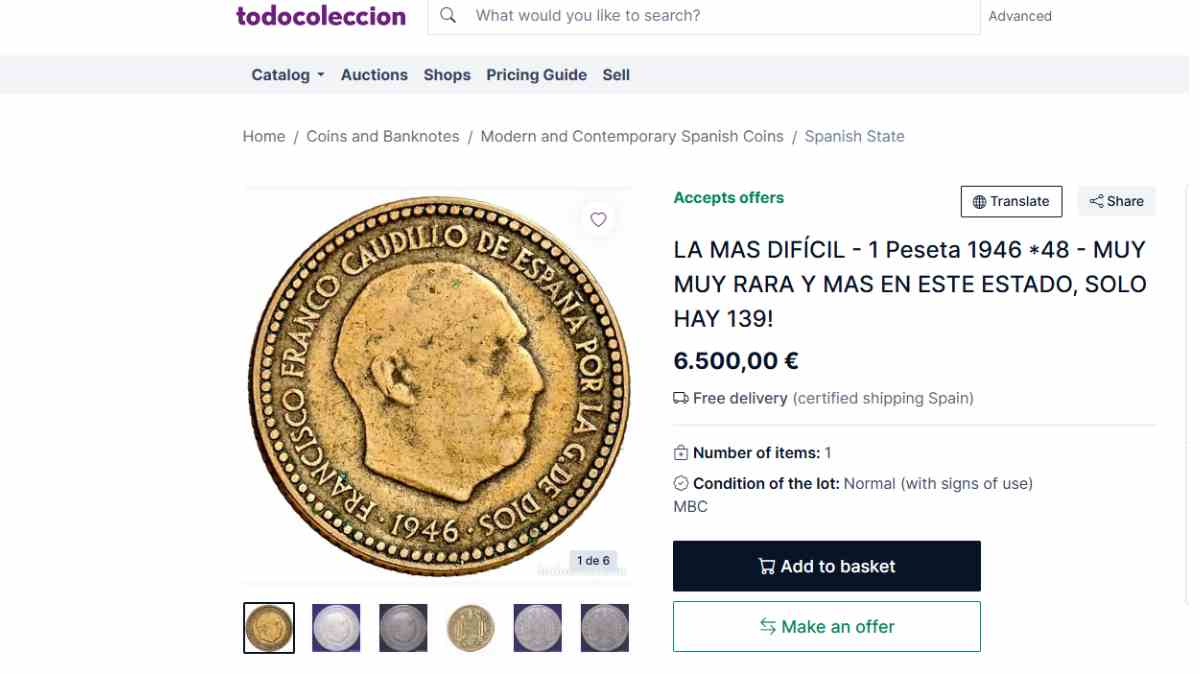The peseta coin holds a significant place in Spain’s rich history of currency. On October 19, 1868, the Spanish Government officially introduced the peseta as the fundamental unit of its monetary system. For over 130 years, it was an integral part of everyday life in Spain, until it bid farewell in 2002 to make way for the euro.
Although no longer in circulation, many people still cherish their collections of pesetas. For some, these coins and notes are more than just currency; they are a bridge to the past, evoking cherished memories of childhood and youth. Others are drawn to the allure of collecting, especially the oldest and rarest pieces. There’s also hope among some enthusiasts that these coins might regain their value in the future.
Why a coin can be so valuable and appreciated
- Emotional connection to the past
- Interest in numismatic collections
- Potential future value
The rare 1946 peseta, of which only 150 units exist, stands out as the most coveted piece from the era. Its scarcity and historical significance make it a fascinating subject for collectors and history enthusiasts alike.
In any case, there are pesetas that are considered true treasures and hold a special place in the world of numismatics. In fact, one of them, due to its unique characteristics, is the most highly valued piece among the Spanish State’s coinage. Let us reveal which coin it is—pay close attention, as you might just have one at home.
The 1946 Peseta : Only 150 Exist
The most coveted piece of the Spanish State’s coinage is the 1946 peseta. This coin carries an intriguing story behind it.

In 1944, there was a quest to find new materials that could offer greater durability for metals. As a result, the alloy used in Yugoslav dinars was adopted. Until that time, due to the widespread opposition to the absolute power regime across the Western world, coinage did not feature the dictator’s bust. Instead, they showcased symbols associated with him, such as the yoke and arrows, the eagle of the coat of arms, the Iberian horseman, and more.
- Year of Minting: 1946
- Unique Alloy: Inspired by Yugoslav dinars
- Historical Symbols: Yoke and arrows, the eagle, Iberian horseman
It wasn’t until 1946 that international pressure began to ease, with many considering that the type of government in Spain was an issue for the Spaniards alone. As a result, the renowned Valencian sculptor, Mariano Benlliure, was commissioned to add the dictator’s face to the coins. Approximately 1,000 pieces were issued with the date 1946 and the stars marked as 19-48.
The Design Change Requested
However, the design did not please the dictator, and Benlliure was asked to make modifications. Ultimately, the revised engraving was used on the pesetas minted in 1947 and 1953.
Rarity of the 1946 Pesetas
It is believed that of the 1,000 units originally issued, only about 150 exist today.
The Value of the 1946 Peseta
The peseta featuring the dictator’s face, of which only 150 units exist, holds significant value. An article published in Dialnet highlights that the valuation of these pieces varies depending on their condition, yet they can reach “elevated values.”